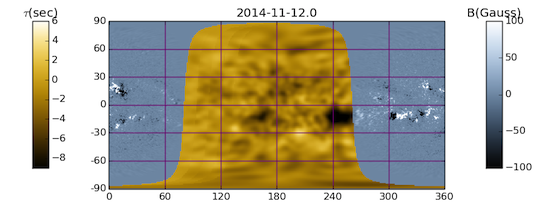This article is more than 1 year old
GIANT sunspot returns, bigger and belchier than ever before
Helioseismologists - they're a thing - warn of solar flares and coronal mass ejections
Sunspot AR12192, which thrilled astronomers and caused a little concern among technologists in October with its size and an X-class flare, is about to come back into view of Earth, bigger than ever.
The sunspot has spent some time on the far side of the Sun, but that hasn't stopped scientists from analysing its activity and trying to predict what we'll see when it returns.
Extensively explained at The Conversation by Monash University solar physics professor Paul Cally, the farside analysis uses a technique called helioseismology.
Developed by Drs Charles Lindsay and Doug Braun, helioseismology is the analysis of the waves we can see to infer the development of the sunspot while it's on the far side of the sun.
According to Stanford's Solar Dynamics Observatory (here), sunspot AR12192 currently looks like this:

AR12192 farside image, from Stanford's Joint Science Operations Center
That imaging suggests that AR12192 will be larger at its next appearance than it was in October, when it fired off a solar flare classified as a pretty-intense X3.1.
The Conversation quotes Hugh Hudson of the Space Sciences Laboratory at Berkeley as saying it's likely that AR12192 will produce a coronal mass ejection (CME) this time around. That's because sunspot regions tend to produce more CMEs as they get older.
That means solar observatories will be keenly watching for a CME, in case the world needs to prepare against disruptions to communications and perhaps power grids. ®
